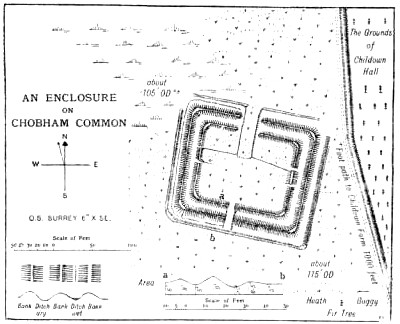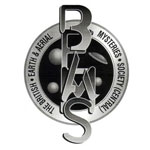Ley Alignment, Neolithic Mini Stonehenge & More!
An Investigation by Kenneth John Parsons & Hilary Porter
>>>PLEASE CLICK HERE FOR A PDF FILE CONTAINING OUR FULL 155+ PAGE INVESTIGATION INTO THIS SITE MYSTERY AND MUCH, MUCH MORE!<<<
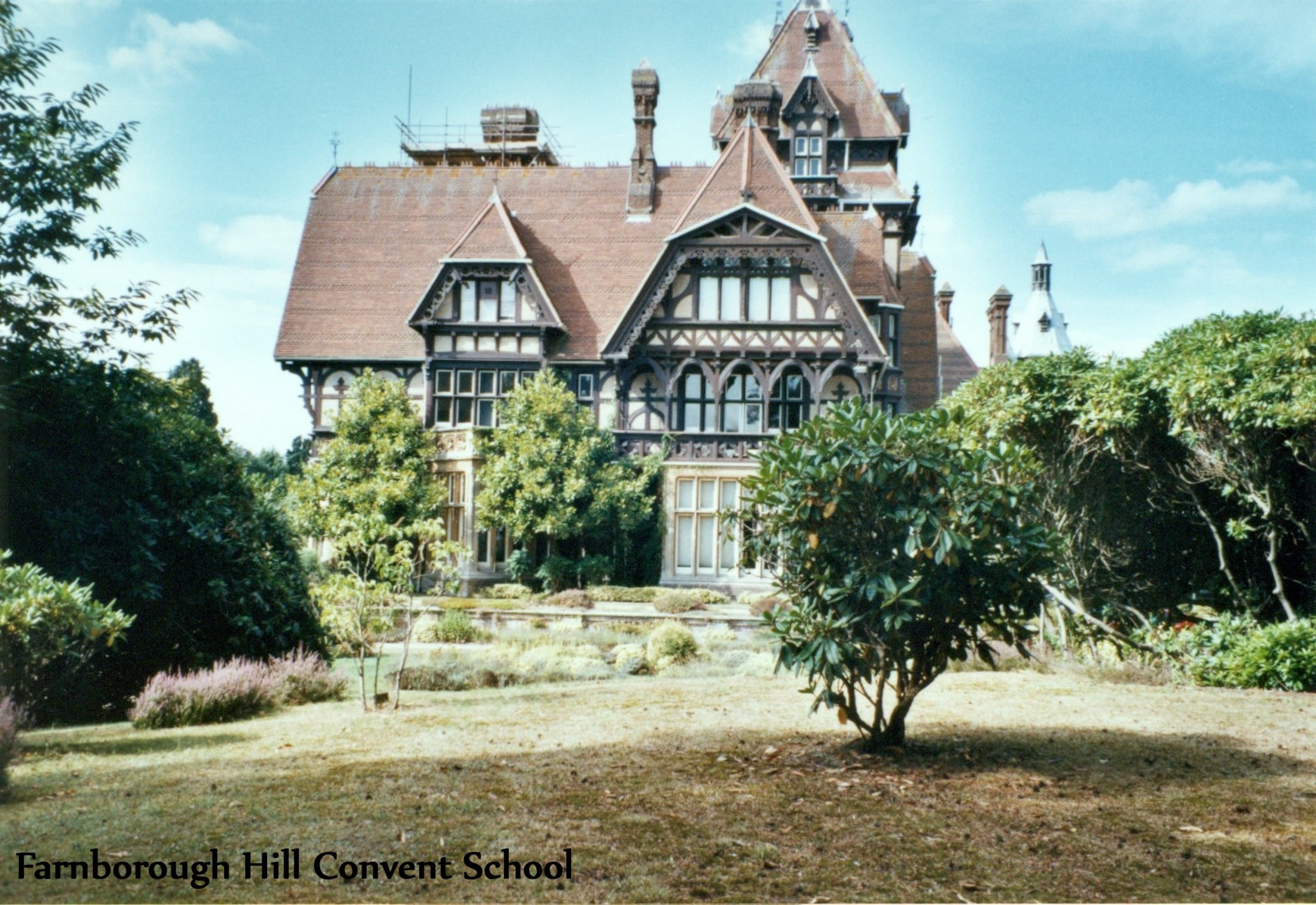
Please click above image for a different perspective
Forgotten by all but a few, each massive boulder measures in excess of 3 feet across and weighs many tones.
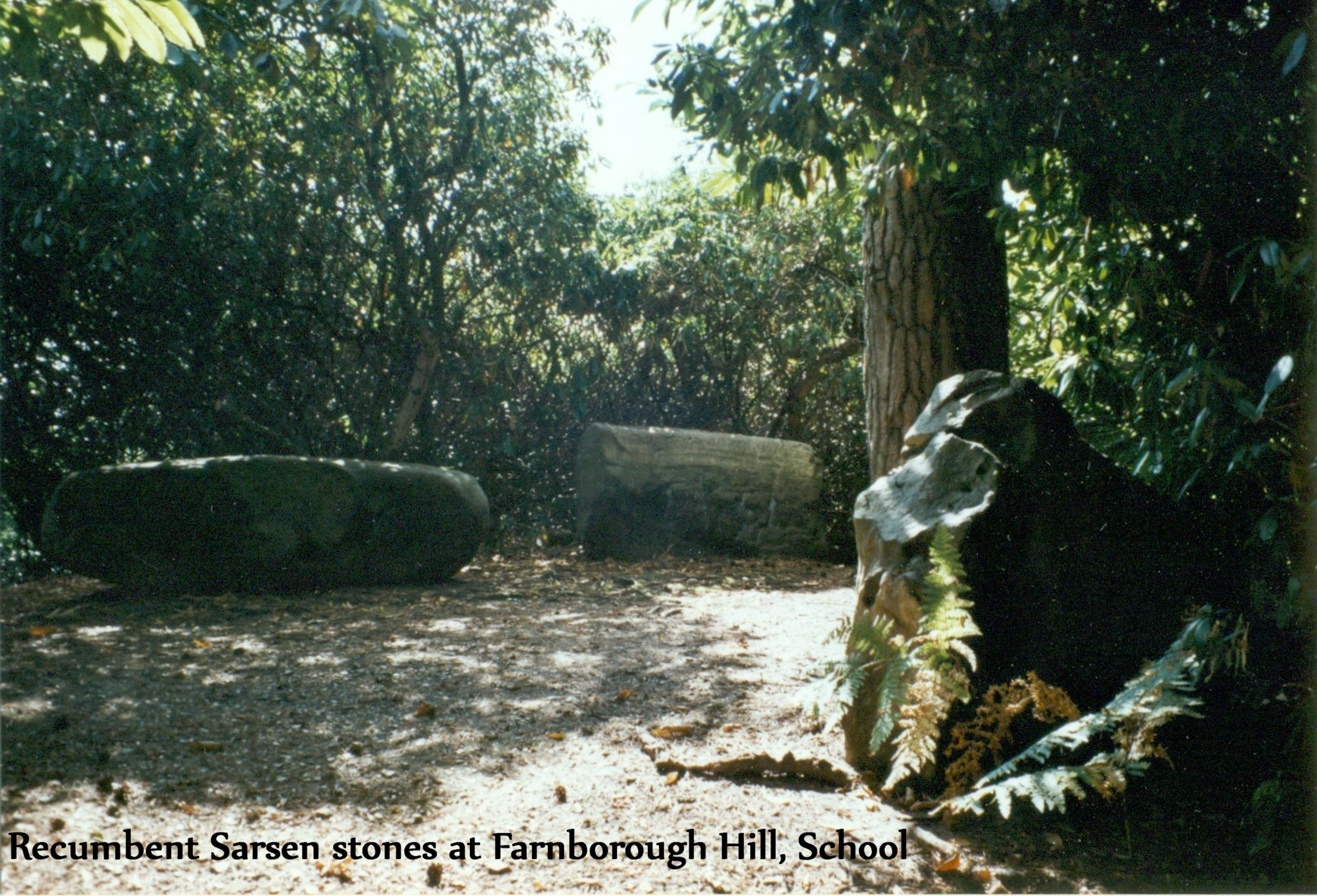
Please click these images to greatly enlarge

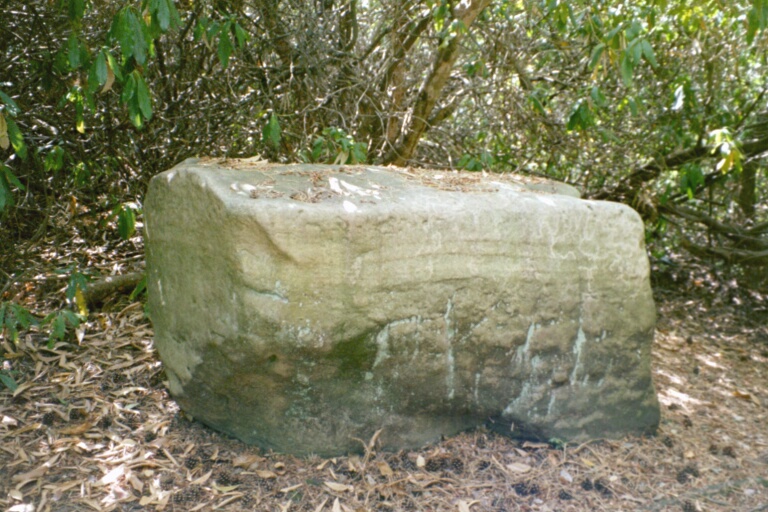

Above: 'Grooved' detail on 'major' stone ...natural or cut marks?
Nearby, there are also examples of 'lesser', flat sarsens, sunken into the ground over time and now almost covered over.
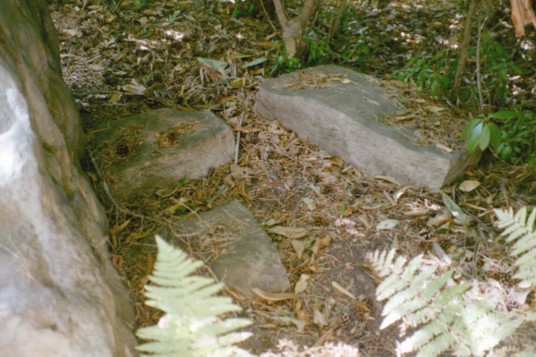
Lesser?
By special arrangement, then senior keeper of this school, Mary Rose Murphy, a well educated lady of great respectability, (now sadly passed away) kindly showed us around the area.
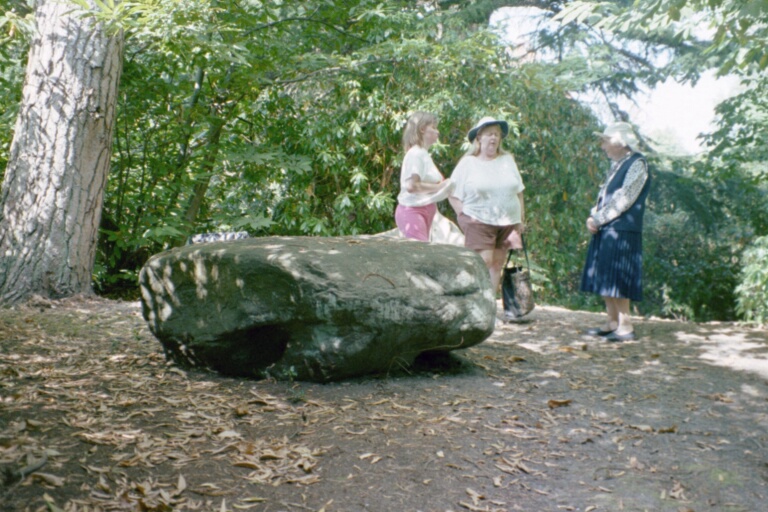
Right to left: Mary Rose Murphy, Hilary and her daughter Sally
After giving us a guided tour, Mary, (shown in above image on right-hand side) went on to tell us about a very old piece of folklore attached to these now fallen giants.
The legend goes that one evening, (many decades ago) the megaliths mysteriously uprooted themselves and moved down the hill on their own, as they were discovered, unceremoniously scattered at the bottom next morning... stones which I may add, that would have proved immensely difficult to shift without the aid of modern, powered machinery!
Our interpretation of that old wives' yarn is as follows; the megaliths were excavated and moved away from the hill by workmen in preparation for the building of the Longman house, and disposed of where they are now; then, their wanton act of vandalism was given a supernatural excuse... a fairytale for how such a terrible thing could have happened to this historical treasure.
Sadly at that time, there was no proper law to protect prehistoric sites, such as the Ancient Monuments Act which wasn't passed by parliament until 1882, twenty two years after the publishers home was built.
We have dowsed these grounds and located several strong energy Ley Lines which pass through here; in fact Mary Rose Murphy herself was a practiced dowser and she conducted a similar confirmatory dowsing survey of the site.
Following the death of her husband Napoleon 111, Empress Eugenie founded Saint Michael's Abbey in 1881; this was designed as a mausoleum for both him and their son the Prince Imperial, both of whom rest in the crypt there, along with Eugenie herself, all in somber granite sarcophagi.
Once described as a 'powerhouse of prayer', St. Michael's, complete with it's gargoyles and other Gothic features, is located less than half a mile away and quite visible from the convent.
Moving further up towards Aldershot, we reach a couple of listed ancient monuments: Albert Road, a side street of South Farnborough, holds an interesting Bronze Age burial mound.

Albert Road Barrow: Image courtesy of Alan S
...and, progressing onward up the Farnborough Road, a prehistoric Bowl Barrow is located on the Queen's Roundabout in North Camp: An older name for this is the Cockadobby Hill, sometimes called "Cock-a-Dobbie Hill"... with 'Dobby' being an Old English word for 'Elf' or 'Goblin'.

Cocadobby Hill: Please click to enlarge
Just think, this tiny hillock on the road intersection, is practically all that remains of what was once a vast swathe of open heathland! National grid Reference: SU86835343
To one side of this alignment is St. Peter's Church, the earliest remaining building in Farnborough, dating back to the 12th century and featuring it's own Christianized, Sarsen stones.
Resuming on our line and traveling further still, we now arrive Rowhill Copse on the southern edge of Aldershot town: This is the location of 'The Bourne', an original, natural spring, which issues from the ground, that is the source of the River Blackwater, this small wood has now been classified as a Nature Reserve.
As one watches it's waters bubbling up from the soil, it is to be remembered that pagan man would have venerated such springs, along with trees, caves and large stones; these crystal waters were probably considered as particularly magical because they were being issued directly from the 'Earth's Womb', as they are likely to have considered it.
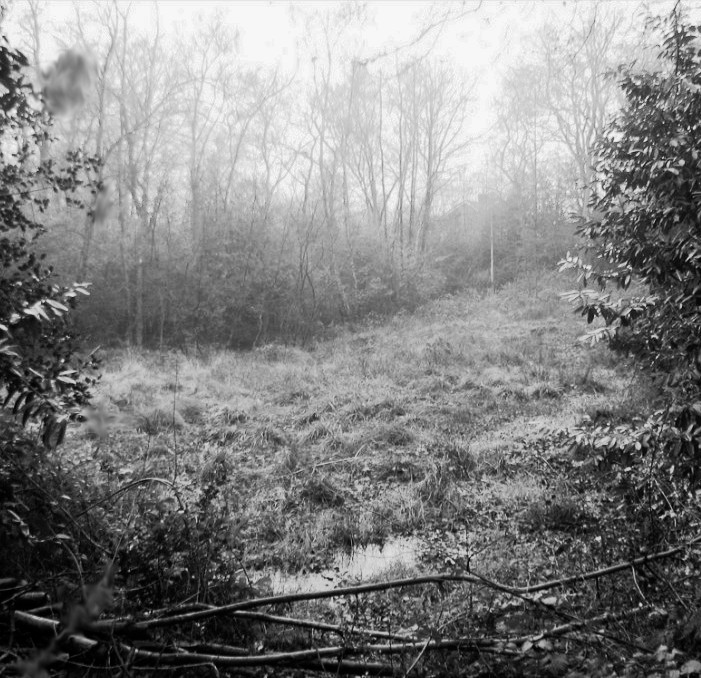
Above: 'The Bourne': This is a mere puddle to start with, but it's trickles steadily accumulate to form the beginning of the River Blackwater: Please click image to enlarge.
Finally, for this particular ley line, I think a mention should be given to two more sites of interest:
Firstly, The 'Aldershot Stone' - yet another ancient sarsen marker.
Admittedly, a bit further over from our main alignment of sites, this small, listed monument has been rightly left in situ by the council as part of a pathway border next to Windmill Close.
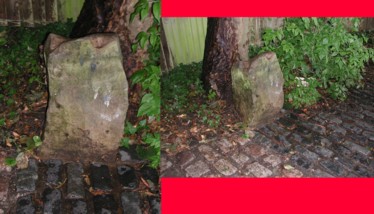
The 'Aldershot Stone'
Last but not least, there are the Bats Hogsty Earthworks - Long Valley, East of Aldershot.

The 'Bats Hogsty': Please click to enlarge
Located in remote woodlands, the curiously named 'Bats Hogsty' is an ancient earthwork system, which consists of several lines of strange banks and ditches covering half an acre of land.
Until recently, archaeologists were somewhat puzzled as to what this site could have originally been constructed for.
It is doubtful though, whether such a set-up was ever used for herding swine as the acquired Hogs Stye, (Pig Pen) title indicates; and the latest suggestion by scholars as to how this name ever came about, is that 'Bat' may have been an important local person,
and the construction was dedicated to him.
'Bat' sure must have been a popular name in times long ago because, (almost unbelievably) there is another similarly named earthwork called the Bats Hogstye to be found just 12 miles or so away at Chobham!
According to Eric Gardner, M.B. (CANTAB.), F.S.A, the Chobham Bat's Hogstye is nowhere near as old as it's Aldershot counterpart, and so for us, this significant age difference between the two sites proves that 'Bat' was NOT a person's name after all, and far more likely to have been a remembrance of an ancient deity.
Another idea that has been proposed, (again by 'experts') is how both sites could have been very early mazes!
